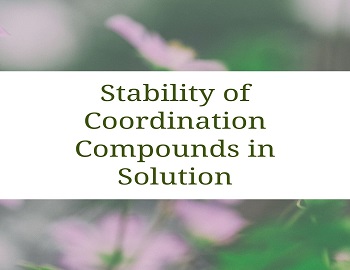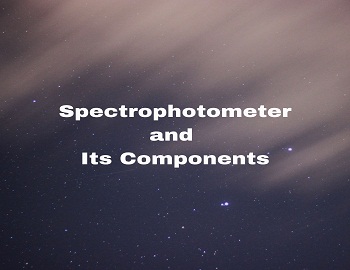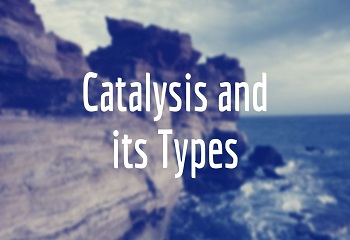Stability of Coordination Compounds in Solution:
A coordination compound is formed by a reaction between a metal ion and ligands and is said to be stable if strong forces of attraction are present between metal ions and ligands. Mostly complex ions are stable but they undergo dissociation in aqueous solution though to a very little extent. The chemical equilibrium established between the undissociated complex and the dissociated ions in solution is represented as follows-
| (MLn)b+ ⇌ Ma+ + nLx- |
Where ‘n’ is the coordination number of the metal, a+, x- and b+ are the charges on metal, ligand and complex, respectively [i.e. (a+) + n(x-) = (b+)].
On applying Law of chemical ≡m to the above ≡m, the expression for ≡m constant is-
| K = [Ma+] [Lx-]n / [(MLn)b+] |
This ≡m constant ‘K‘ is known as the Dissociation Constant and hence, the smaller the positive value of ‘K’, the greater is the stability of the complex and vice versa. The reciprocal of the dissociation constant is known as Stability Constant and so, the greater the value of the stability constant, the greater will be the stability of the complex i.e. if the ≡m is represented as-
| Ma+ + nLx- ⇌ (MLn)b+ |
The ≡m constant is known as Stability Constant (K–) is given as-
| K– = [(MLn)b+] / [Ma+] [Lx-]n |
Example-
| Cu2+ + 4NH3 ⇌ [Cu(NH3)4]2+, K– = 4.5 X 1011 Cu2+ + 4CN– ⇌ [Cu(CN)4]2-, K– = 2.0 X 1027 |
This indicates that CN– is a stronger ligand than NH3 and forms a more stable complex.
Thus, the stability of a complex depends upon-
- Nature of Central Ion- Greater is the charge density, more is the stability of a complex. Example in the complexes of Fe+2 and Fe+3, complexes of Fe+3 are more stable. In case of ions with same charge, the ion with smaller size gives more stable complexes.
- Nature of Ligand- More basic ligands which have strong tendency to donate their electrons form more stable complexes. Example complexes involving F– ions are more stable than those involving Cl– ions or Br– ions.









Comments (No)